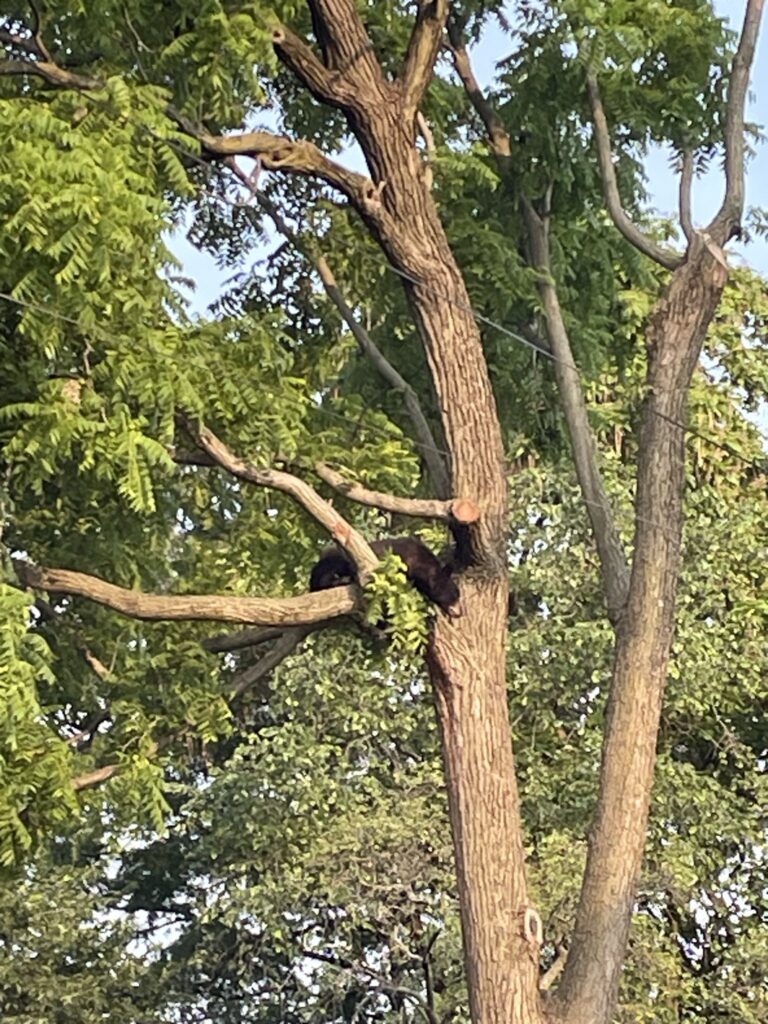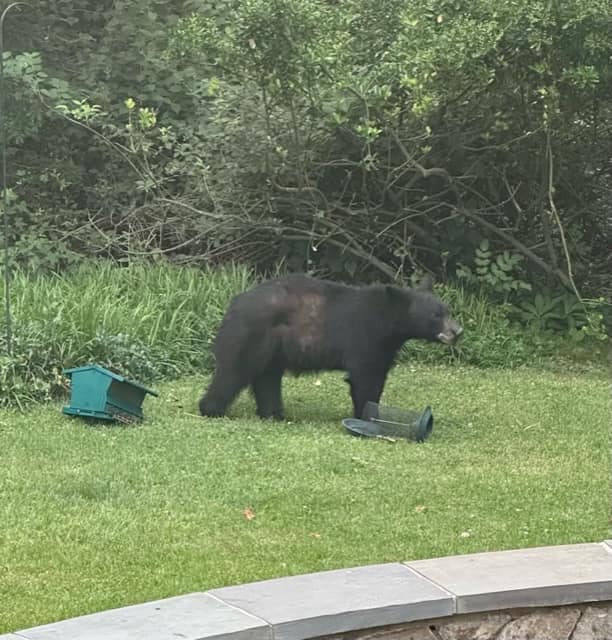If it feels like there’s been a lot of bear sightings reported this month in the Chesapeake Bay region, it’s not your imagination. Since May, bears have been sighted in Baltimore County, Maryland, in the Washington, D.C. suburbs, and even in the District itself, prompting awareness campaigns from the Maryland Department of Natural Resources (DNR) and other agencies.
A black bear was seen June 8 in the backyard of a house near an elementary school in University Park, Maryland, close to the University of Maryland, College Park. It seemed to have pulled down a bird feeder for a snack.

On Friday morning, June 9, the Anacostia Watershed Society reported a bear was spotted on both sides of East West Highway north of D.C., and later that morning, one was found up a tree in Northeast D.C. It was tranquilized and relocated with the help of veterinarians from the Smithsonian’s National Zoo.
In Parkville, Maryland, around the same time, a young bear near a homeowner’s pool also seemed to be attracted to a bird feeder.
In Frederick, Maryland, near the Monocacy River, a bear cub sighting in mid-May caused the Maryland School for the Deaf to issue a Shelter-in-Place alert for its Frederick campus. The cub was safely contained.
Earlier in May, DNR reported a 140-pound male black bear was found tampering with a beehive in Rockville, Montgomery County, like a much larger Winnie the Pooh seeking honey. That bear, too, was safely released in a “more suitable environment”.
DNR estimates Maryland’s black bear population at about 2,000 bears. They say bear-human conflicts and bear-vehicle collisions increase from May through July because young bears travel great distances to find new territory and easy food sources.
Tips if you come across a bear include making the bear aware of your presence by “talking in a firm voice”, ensuring the bear has an escape route by giving it space, back away slowly with arms raised, and don’t panic, shoot, approach, or feed the bear.
The Susquehannock Wildlife Society, in the lower Susquehanna River area where bear sightings aren’t uncommon, wants to dispel unfounded fears about bears. They write, “Often seen as human-killers, black bear attacks are actually incredibly rare, with an estimated hundreds of thousands of black bears inhabiting North America, approximately 100 deaths that have been recorded in the last 100 years.”
The wildlife organization says we shouldn’t be concerned about seeing bears closer to our neighborhoods, but we need to do our part to secure our trash and make sure bears don’t get acclimated to humans providing them a food source.
If a bear shows any signs of aggression please stay indoors and contact Maryland DNR’s Bear Hotline 410-260-8888.
-Meg Walburn Viviano




